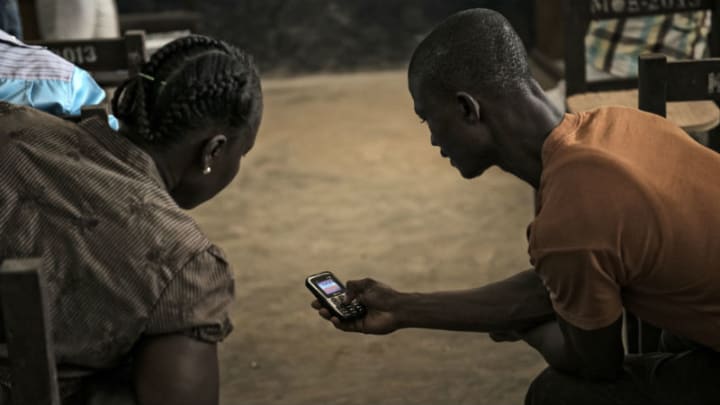
Silicon Valley is one of the wealthiest areas on the planet, a place where technology and innovation are abundant. The availability of technology is a widely assumed given for people there, with seemingly everyone tethered to their smartphones and nearly everything is a click away. Yet outside this capital of innovation, in many parts of the world, the reality is far different.
How digital identity can address both protection and inclusion
Now, NGOs, donors, and tech actors seek to strike a balance between doing no harm and leaving no one behind.
Consider that nearly 1 in 5 U.S. school children cannot finish their homework due to the digital divide; almost half of the world’s population does not have internet access — with saturation rates especially low in parts of Africa and southern Asia; and worldwide, there are 2 billion unbanked people.
Technology is often touted as a great equalizer, but it will only realize this potential if it is purposefully distributed. Factors such as geography, mobility, neurodiversity, age, vision and hearing abilities all present huge obstacles to equitable technology adoption. In order to ensure that innovation serves everyone, it must be inclusive of all of these factors.
I’ve written previously about creating shared value — a business philosophy popularized by Harvard Business School professor Michael E. Porter — in which companies seek to authentically engage with the communities in which they operate and have an obligation to do more for the markets they have traditionally served.
Applying this philosophy to the tech industry, we must recognize that for technology to be a force for good, it must be a force for all. To accelerate this type of democratization, we must work together. Here’s how.
Design with people, not just for them
In the timeless words of Stephen Covey, “seek first to understand.” This ethos means conducting quantitative research that transcends reducing people to data points. We need to proactively engage with a broad spectrum of people and discuss what technology will actually be useful to them. One important way to do this is to infuse our teams, from research and development to marketing to the executive suite, with as many viewpoints as possible.
Harvard Business Review found that when at least one member of a team has attributes or values in common with the end user, the entire team better understands that user.
Enabling people, transforming lives with assistive products
The vast majority of people living with disabilities in LMICs do not have access to assistive products that could transform their lives. Devex explores some possible solutions. Explore more in the Development Enabled series.
Implementing hiring, development, and retention practices that are inclusive of a broad range of gender, race, ethnicity, ability, orientation, and age creates a culture that facilitates the free sharing of ideas. Expansive diversity within a company creates built-in focus groups and enables the business to continuously incorporate varied opinions and preferences about products and services.
At HP, it is no accident that we are regularly rated a best place to work for people with disabilities. Diverse points of view and experiences are what enable us to design and develop products with an “ease-of-use” priority.
Deploy technology to bridge gaps
One of the benefits of technology is the ability to abolish barriers such as geography. Temenos, a global banking software provider based in Geneva, Switzerland, is helping to reach the more than 2 billion people around the world who do not have access to banking. In Myanmar, for example, Temenos is putting its core banking application into the cloud, enabling loans for microbusinesses and creating opportunities for villagers in remote areas.
Geography is not the only barrier. Millions of persons with disabilities have limited use of their hands, which prevents them from doing activities that most of us take for granted, such as using our mobile devices. Open Sesame uses the front-facing camera of any Android device in order to track head movement to unlock touch-free texting, social activity, web searching, and more.
Technology can also connect people with similar needs and enable them to help each other, such as AXS Map, a crowd-sourced tool for sharing reviews on the wheelchair accessibility of businesses and places.
We also need the private and public sectors to join forces to drive policy change and build infrastructure to deliver technology to wider bands of people. For example, Montgomery County in Maryland is enabling access to technology to level the playing field for students of all socioeconomic backgrounds and ensure wider representation in academic and career paths down the road.
Define educational targets
Another key way to democratize adoption is to provide more support for those who may be unsure or intimidated by technology. Training can help outlier groups understand and use technology and its innovative applications. With a looming global high-skilled workforce shortage of 85 million, this is an urgent need.
NPower is an organization that is helping create pathways to economic prosperity by delivering technology training to military veterans and young adults from underserved communities. Microsoft’s M-Powered platform is another instance of leveraging technology to empower people with disabilities and other marginalized groups.
Through a partnership between the public and private sector, the M-Powered portal provides technology training and mentorship to youth and people with disabilities in Indonesia, Malaysia, Thailand, and Vietnam, improving their employability and connecting them to job opportunities in the tech sector.
Technology is an incredible agent for change, but only if everyone plays a role in an inclusive conversation. That is true innovation as we know it.




